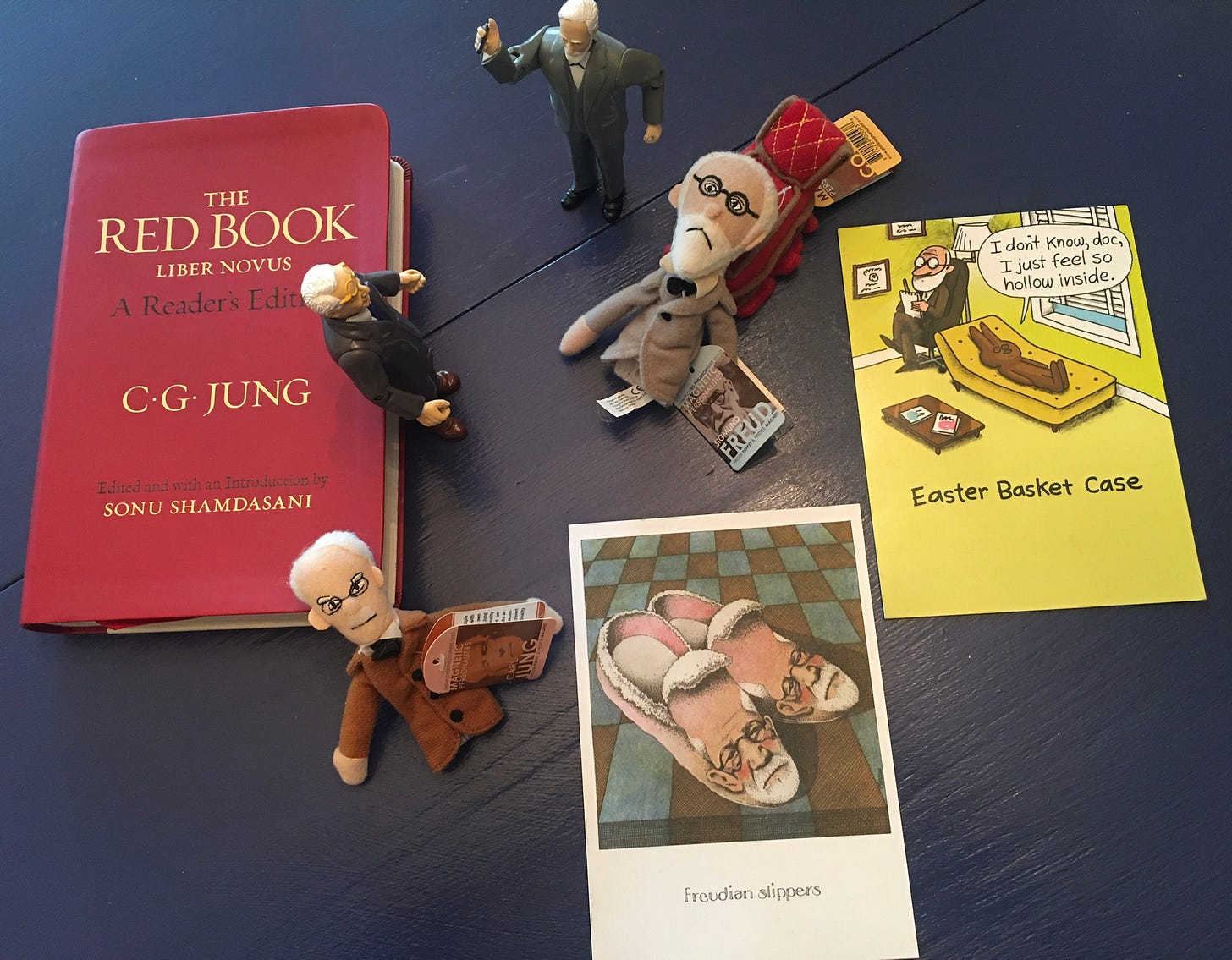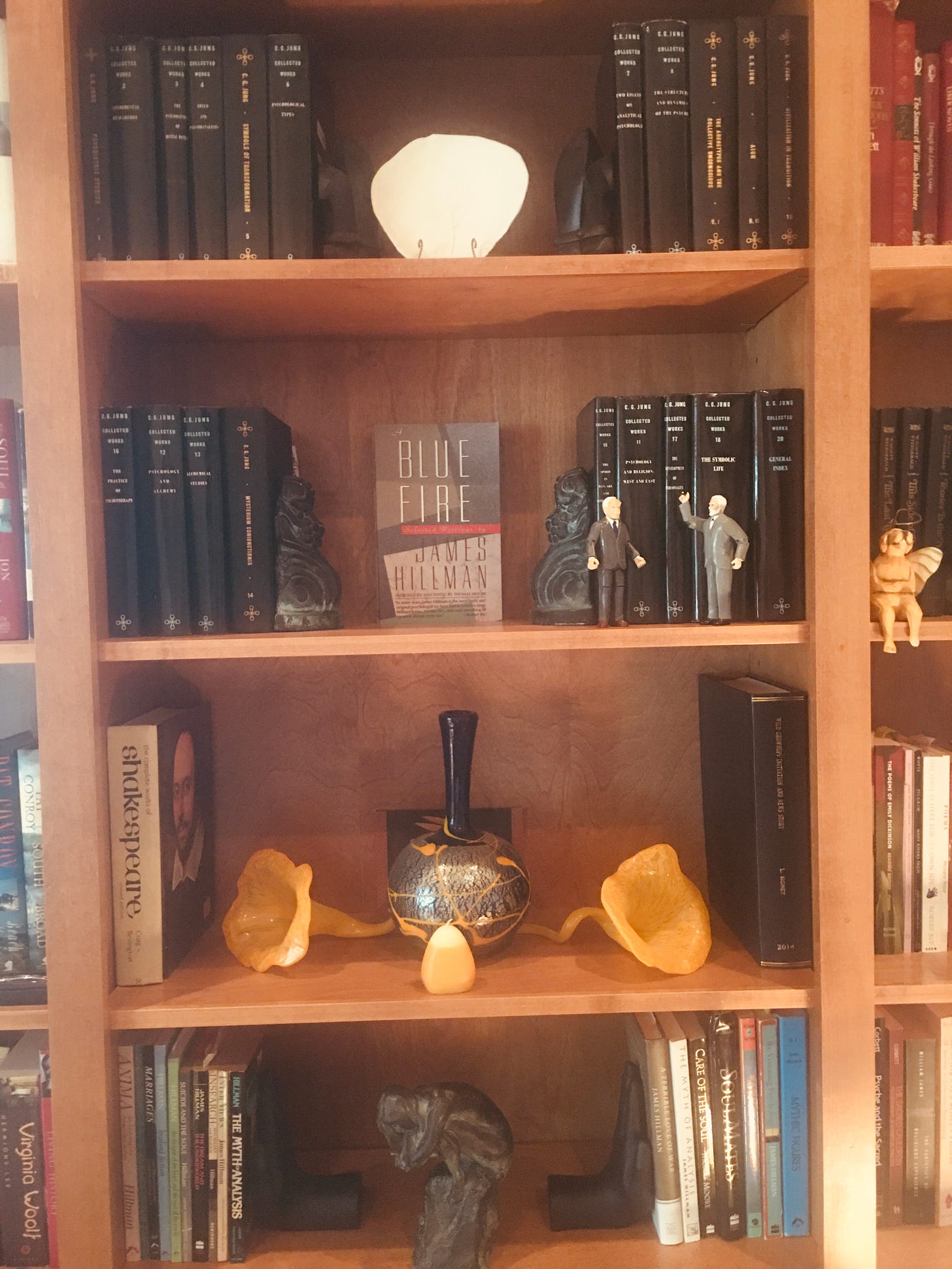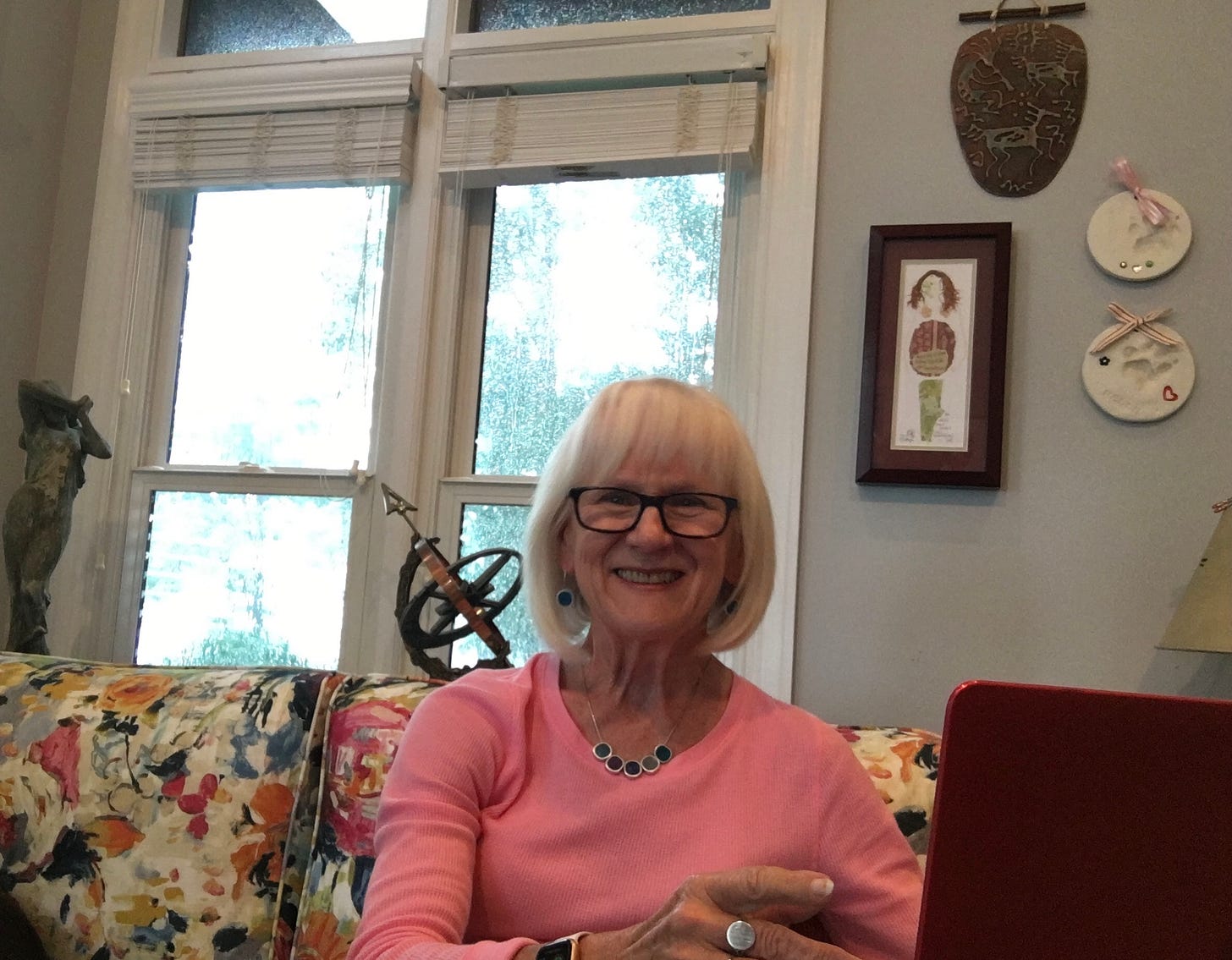Welcome to newShrink, a free weekly newsletter bringing a psychological perspective on all kinds of news, public figures and current popular culture to your inbox.
This labor of love began experimentally at Memorial Day 2021 with about 80 willing “beta” subscriber-readers of-like-mind-and-spirit, a constant group that’s more than doubled by adding readers of shared mind and spirit. The ongoing newShrink conversation continues, with steady and still-free expansion of email subscribers— by design kept largely by reader-shares and by invitation to people I think might value joining us.
There’s absolutely no obligation, and it’s a simple one-click opt-out should you find newShrink not your thing or your in-box is just too jammed. The newsletter posts are also accessible anytime at the public website newshrink.substack.com.
newShrink in a nutshell
Most weeks the newsletter will scan news including politics, arts, entertainment, comedy and other cultural trends and identifying psychological themes, patterns and markers in them.
Some posts will feature a deeper dive on ideas and practices from depth psychology to focus on life-stories — those in the news and our own.
The “depth” in depth-psychology simply means going beyond just meds and mental illness; it also takes into account the unconscious things that make us tick and greatly influence our lives and world. You might say the depth part keeps the psyche in the word psychology. (Psyche is a Greek word for soul and logos means word or language-of).
some context
Concern and conversation about the American psyche, our collective soul, are showing up everywhere, and this has been happening for a while now.
My vision for newShrink addresses the question of what a healthy psyche or soul of a maturing America might look like… what the different dimensions of my psychology profession contribute to that understanding… and how we individually and collectively might aim and work toward that health.
who i am and why i’m here
NewShrink is kind of a stake in the ground to hold me to a pledge: To show up and devote my news-, research- and writing- time to track this “soul of America” theme and what it might mean.
This may be a labor of love, spitting in the wind or a mix of both. But it keeps following me home and seems to have my name on it.
By profession and résumé I’ve been a daily-newspaper reporter, a mega-bank corporate communicator, and since 2010 Jungian psychologist in private practice. My degrees are in journalism, counseling psychotherapy/MA and depth psychology/PhD.
(I’m pretty old.)
Since 2008 my doctoral- and post-PhD work in depth psychology have tracked and focused on life-stories of psychologically mature, authentic (ie. soul-engaged) adults in the news and what they have to teach us about our own paths — and that of an American culture in many ways stuck in arrested adolescence.
My graduate-study institute, Pacifica, even has as its motto animae mundi colendae gratia. In the Latin that’s “for the sake of tending the soul of the world.”
I don’t think it’s possible to think or talk about whatever we mean by healing the soul of America, without its being about both individuals and our democracy. I count myself among many who think we have recently come perilously close to destroying ours and that the need remains urgent to find fresh ways and venues to think, talk and act.
A quote I like a lot has been attributed to 20th century Catholic social-justice activist Dorothy Day, who said that for her, “writing is a form of community.” The very idea of writing as a form of soul-healing and feeding- community seems a novel if not revolutionary antidote to the perversions of it we’ve experienced over the past several years — the dark web, conspiracy-driven sites, trolls, ALL-CAP X rants, to name a few.
It nags that by now I ought to be able to discuss in broader community some coherent things that even might add healing in a wounded — and a wounding — time.
You may have heard psychologists say stuff like “extraverts talk-to-think.”
I write.
surveying the news-scape
Since newShrink’s inception in 2021 on the national scene there’s been hope, with dramatic improvements reflected in many poll numbers, yet also plenty of pain, churn and chaos.
One data-point stopped me cold: The CDC announced that 50 percent of American adults now have at least one diagnosed mental-health disorder (and that echoes data on psychotropic medication prescriptions.) Even given the long siege and psychological tolls of the COVID-19 pandemic, political turmoil and violent social upheavals, the exponential escalation rates and totals are staggering.
Symptom-treatment via cognitive tools and medications and efforts to increase awareness and acceptance are necessary and useful parts of my field. Much of mainstream journalism and commentary — and much of psychotherapy — focuses on this dimension of psychology, and that is valuable.
We also need different, broader, deeper.
By now it’s all too clear what empty, chaotic and soul-sick looks and feels like, both collectively and in individual lives. We need to recognize and aim with similar clarity for the robust, the resilient, the animated (a word that, again from Latin, means, literally, soul-enlivened).
The diverse news-scape is about the closest thing we have to a common public square. Psychologically it offers an at-times-literal screen on which we each can recognize ourselves, develop empathy and learn from both our projections there and what they mirror back.
Getting at this calls on perspectives and skills of journalists; of authors, scholars and experts; and of psychologists. First is persistent, fact-grounded, democracy-preserving excellence of the journalists — whose dailiness is the "jour” in journalism. T
… to form a more perfect union
Much of what I draw from these days is grounded historically in a few core concepts about the unconscious/soul and human character developed over centuries and woven forward by authors and thinkers across disciplines that inform depth psychology. I’ve gathered just a few of them for imagined rich dinner-table dialogue. (And here’s an example of how our blind-spots work: The immediate jolt of this snapshot’s white-maleness, and the total absence of my entire diverse library of news-relevant digital and audio voices, underscore for me the urgent need for both the current-news and the historic-scholarship perspectives.)
From Pulitzer-prize winning historian Jon Meacham: “…soul is the vital center, the heart, the essence of life. Heroes and martyrs have such a vital center; so do killers and haters… Socrates believed the soul was nothing less than the animating force of reality… in Genesis in the Hebrew Bible soul the soul was life itself… in Western thought… soul is what makes us us.”
That “animating force of reality” is foundational for Jung’s entire analytical psychology of an energetic unconscious push toward individuation throughout adulthood, and warrants emphasis here. He described his individuation as the process over time of remembering, reconnecting, reuniting the “lower case (ego) self” that we each form in youth to adapt and function in the world with the “capital S Self’s” innate soul-character image we were born with. Jungian James Hollis suggests we have “first adulthood” and “second adulthood,” the two more like levels within us to be reconciled than chronological.
For James Hillman, Jungian analyst, author and founder of Imaginal Psychology: the “soul’s code… in a nutshell… is about character, about innate image. Together they make up the ‘acorn theory’ which holds that each person bears a uniqueness that asks to be lived and that is already present before it can be lived…”
In his exquisite mid-20th Century memoir, Speak, Memory, novelist Vladimir Nabokov conceived that innate character image as “… a certain intricate watermark whose unique design becomes visible when the lamp of art is made to shine through life’s foolscap.” (Perhaps as a fellow curmudgeon) Hillman clearly appreciated Nabokov, too, citing this full quote among “Epigraphs in Lieu of a Preface” to his bestselling 1996 book, The Soul’s Code, about the “acorn theory.”
David Brooks, journalist-columnist whose own apparent deepening journey I’ve appreciated his columns over years reading, citing and sharing (as with this one from Thursday) echoes many of these themes in his 2015 book, The Road to Character. (Though he hasn’t mentioned or aligned his ideas to the many he shares with depth psychology I have long wanted to welcome him!) His emphasis on crucibles that forge and deepen character over time suggest the “thresholds of initiation” that Joseph Henderson developed from traditions of indigenous cultures across millennia. Borrowing a bit from Brooks, I’ve also found it useful shorthand to think in terms of the “résumé version” vs the “eulogy version” of a life-story.
With the line “… hold to the truth of the image you were born with…” and overall themes of his poem “All the True Vows” , Anglo-Irish poet David Whyte describes this need and challenge to hear and reconcile these equally real voices of the different levels within us. Perhaps an apt if sobering poem for this season of commencements, career launches and weddings!
And now Dante Alighieri, one of my favorites at the table, with particular relevance as we look at today’s public figures in the news. Aside from the beauty of his Divine Comedy, Alighieri didn’t start out as a poet. He was a prominent middle-aged public figure himself when he found himself exiled during brutally polarized political battles of his 13th-14th Century Italy. His Commedia is in a sense a memoir of his own initiatory descent-death-rebirth crucible that is also rich with his political philosophy.
This idea, that our very adulthood’s defining mission — like that of our nation — is a persistent, unfolding inner push “to form a more perfect union” within ourselves is interesting to keep in mind as we begin to look at public figures like Dante in our time.
(Now for a lighter note, back in the kitchen…)

virtual tour
mind-space
work-space
home-space

“There is no house like the house of belonging,” David Whyte again (unusually chatty this week) portrays a deeply authentic soul-home that’s beyond, not necessarily even similar to, street address or physical dwelling.
Shortly I will write more on several dimensions of “home” on both the news and psychological fronts. Home has particular power these days in literal and factual terms, as we collectively and individually emerge from the seclusions of COVID-19. And it is of course a theme in the challenges of both immigration and homelessness, as well.
logistics, comments, privacy
NewShrink is free now, and you will always have a free option.
Your contact information is confidential and only your participation in Comments (or hitting “reply all”) will identify you as a subscriber.
Email me individually anytime. Daily email volume is still pretty second-nature after years in corporate life, so I can likely respond most promptly there.
I’ll respond as possible in group Comments. Energy-bandwidth will limit my time there.
some caveats:
NewShrink isn’t a forum to debate about news providers or what journalism is. I’ll post tips and strategies on choosing and managing news, media and social media volume in the Archive, and you can email me for other suggestions.
NewShrink isn’t psychotherapy and my role here is not as a therapist (which professional ethics rightly prohibit.) Meanwhile, piqued interest or paying new attention to unconscious patterns in the world can also bring unexpected focus on the personal for you, which merits exploration in guided privacy. I limit my clinical practice these days to existing, long-term or returning clients, and I have an excellent referral-partner colleague and friend who can assess and either provide or steer you to the right resources. Do email me anytime for information,
And, that’s all I have. Talk to you soon!
tish 🦋💙
… it is important that awake people be awake,
or a breaking line may discourage them back to sleep;
the signals we give — yes or no, or maybe —
should be clear: the darkness around us is deep.
— William Stafford, “A Ritual to Read to Each Other”
NewShrink is public, so please do share with anyone you choose.
If you need to stop receiving the newShrink email newsletter you can click “unsubscribe” below.








